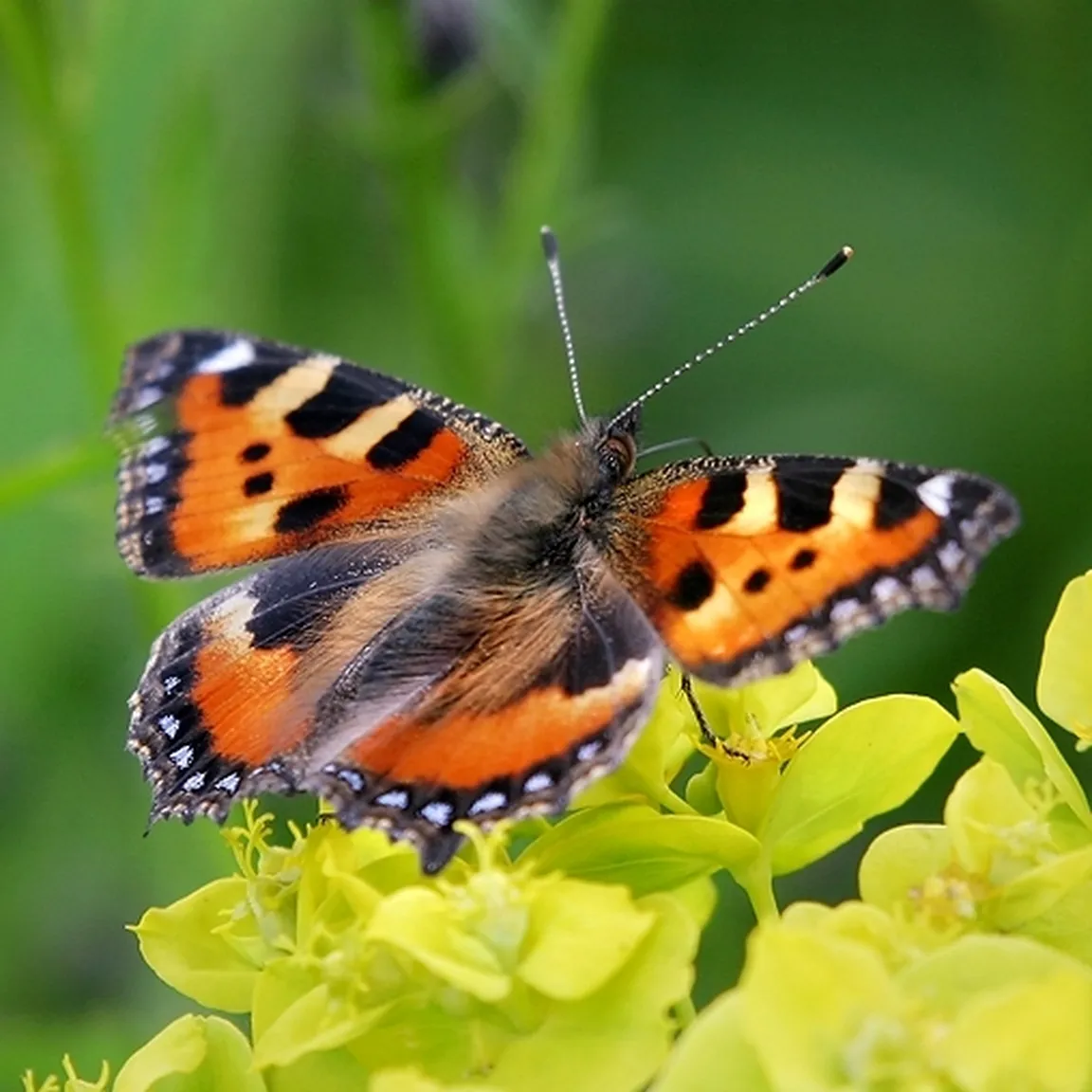Wingspan: 39–50 mm
Flight period: in one to three generations from May to October; adults overwinter and the following year fly from March to May
Larval host plants: stinging nettle (Urtica dioica)
Small Tortoiseshell (Aglais urticae) is one of the first butterflies we see flying in spring. Adults overwinter in the shelter of tree hollows or houses and on the first warm days come out into the open.
The upperside of its wings is orange-red, along the upper edge of the forewings black and light-yellowish bordered spots alternate, and the light spot on the hindwing is white. The outer edge of the forewings and hindwings is adorned with black-edged, gleaming blue crescent-shaped spots. Long, golden-brown hairs from the body extend onto the darker, gold-dusted part of the wings at the base. In the inner corner of the underside of the wings there is a large black spot, three smaller black spots are also in the center of the forewings. The underside of the wings is distinctly brown-black, with a lighter brown band.
The Small Tortoiseshell has a very large range (distribution area) that extends from the northernmost to the southernmost parts of Europe. It occurs everywhere where the larval host plants grow, from the sea to high mountains. It is common near human settlements, on pastures, and along the edges of riverine woodlands.


